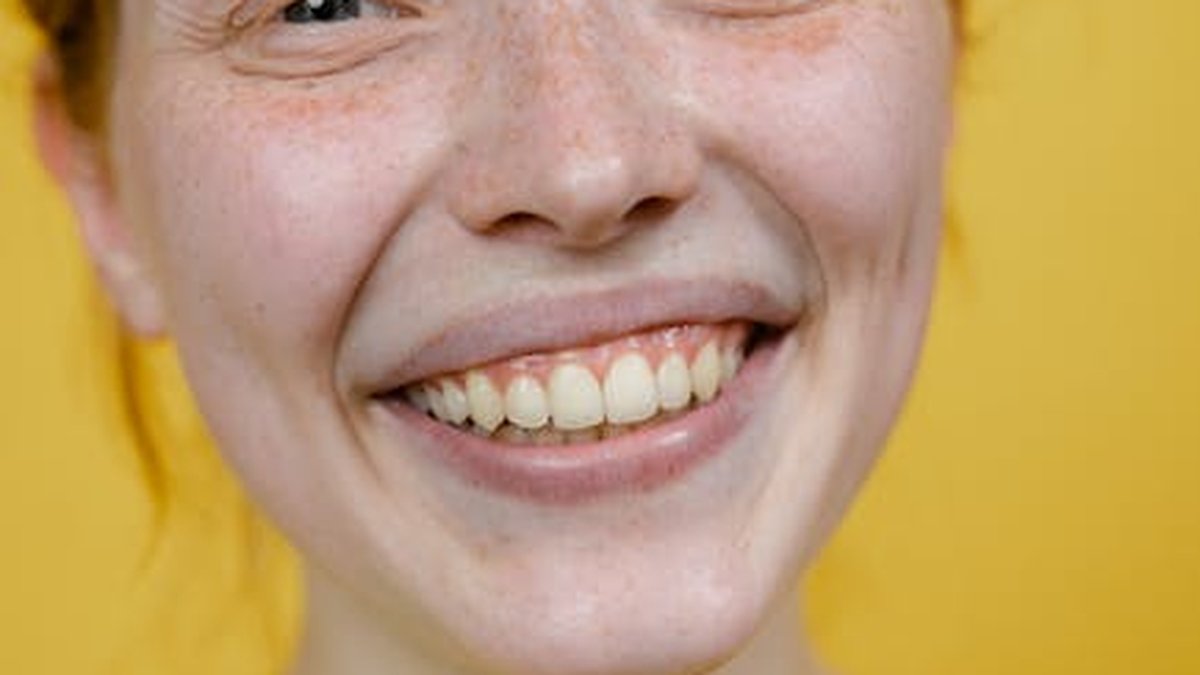We’ve all been there: staring in the mirror, scrutinizing our smiles, and maybe even feeling a pang of insecurity about the shade of our teeth. In a world obsessed with pearly whites, it’s easy to assume that yellow teeth automatically equal bad oral hygiene. But what if I told you that’s not always the case? What if the color of your teeth is telling a much more complex story? Let’s dive into the truth behind tooth discoloration and discover why a yellowish tint doesn’t always spell dental doom.
The Natural Shade of Enamel: Understanding Your Teeth
First, let’s talk about enamel – the hard, protective outer layer of your teeth. Enamel isn’t pure white; it’s actually translucent. This means that the color you see is a combination of the enamel and the dentin underneath. Dentin, the layer beneath the enamel, is naturally a yellowish color. The thickness and translucency of your enamel will significantly influence how yellow your teeth appear.
Genetics Play a Role
Just like eye color or hair color, the natural shade of your teeth is largely determined by genetics. Some people are simply born with thicker, whiter enamel, while others have thinner, more translucent enamel that reveals more of the yellow dentin underneath. It’s just part of who you are!
Age and Time
As we age, our enamel naturally thins due to wear and tear from chewing and acidic foods. This thinning exposes more of the underlying dentin, making teeth appear yellower. It’s a natural part of the aging process and not necessarily a sign of poor oral care.
External Factors: What Else Contributes to Tooth Color?
Beyond genetics and age, several external factors can contribute to tooth discoloration. Understanding these factors can help you make informed choices about your lifestyle and oral hygiene routine.
Diet and Beverages
Certain foods and drinks are notorious for staining teeth. These include:
- Coffee and tea: These contain tannins that can cause surface stains.
- Red wine: Another culprit due to its tannins and acidity.
- Soda and sugary drinks: These erode enamel, making teeth more susceptible to staining.
- Berries: While healthy, dark berries like blueberries and blackberries can stain teeth.
- Soy sauce and balsamic vinegar: These dark sauces can also contribute to discoloration.
While avoiding these completely might be unrealistic (and sometimes undesirable!), moderation and rinsing your mouth with water after consumption can help minimize staining.
Tobacco Use
Smoking and chewing tobacco are major contributors to tooth discoloration. Nicotine and tar can cause stubborn, deep stains that are difficult to remove. Quitting tobacco is not only beneficial for your overall health but also for the appearance of your smile.
Medications and Medical Conditions
Certain medications, such as tetracycline antibiotics (especially when taken during tooth development), can cause intrinsic staining, which means the discoloration is within the tooth structure itself. Some medical conditions can also affect tooth color. It’s always a good idea to discuss any medications you’re taking with your dentist.
When Yellow Teeth Do Indicate a Problem
While yellow teeth don’t always mean bad oral health, there are times when they can be a warning sign. It’s important to be aware of these situations and consult your dentist if you have concerns.
Poor Oral Hygiene
Neglecting to brush and floss regularly allows plaque and tartar to build up on your teeth. Plaque is a sticky film of bacteria that can stain teeth, while tartar is hardened plaque that is even more difficult to remove. Consistent brushing and flossing are crucial for preventing plaque and tartar buildup.
Enamel Erosion
Enamel erosion, often caused by acidic foods and drinks or acid reflux, can expose more of the yellow dentin underneath. If you notice your teeth becoming increasingly sensitive or see visible signs of erosion, it’s important to address the issue with your dentist.
What Can You Do About Yellow Teeth?
If you’re concerned about the color of your teeth, there are several options available to you:
- Professional teeth whitening: Your dentist can offer in-office or take-home whitening treatments that are safe and effective.
- Over-the-counter whitening products: Whitening toothpastes, strips, and gels can help remove surface stains, but they may not be as effective as professional treatments.
- Good oral hygiene: Brushing and flossing regularly, along with professional cleanings, can help prevent staining and maintain a healthy smile.
- Lifestyle changes: Limiting staining foods and drinks, quitting tobacco, and addressing any underlying medical conditions can also improve the appearance of your teeth.
Ultimately, the most important thing is to maintain good oral hygiene and consult with your dentist if you have any concerns about your teeth. Remember, a healthy smile is more than just a white smile. It’s about having strong, healthy teeth and gums that contribute to your overall well-being.
So, the next time you glance in the mirror and notice a hint of yellow, don’t automatically jump to conclusions. Consider the factors at play – your genetics, your age, your diet, and your oral hygiene habits. Embrace your smile, whatever its shade, and focus on maintaining a healthy mouth that makes you feel confident and happy. Because true beauty radiates from within, and a genuine smile is always the most captivating feature.





